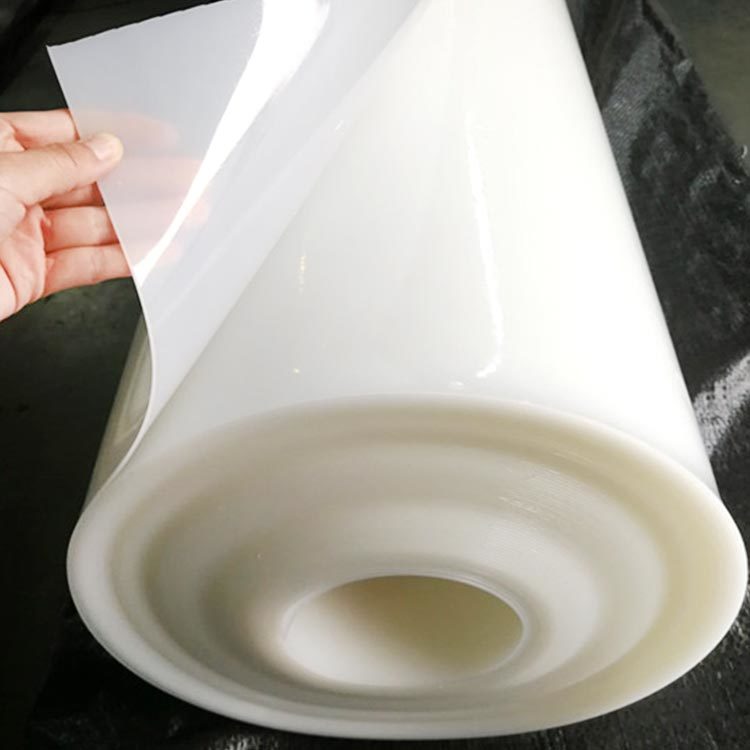Waterproof Geotextiles: Essential Materials for Construction Projects
Release time:
2025-06-21
Waterproof geotextiles are invaluable materials in the construction and landscaping sectors. Their ability to separate, filter, and drain makes them essential for various applications, ultimately contributing to the durability and stability of structures
Waterproof geotextiles are specialized fabrics used extensively in construction and earthwork applications. They are designed to provide a barrier against water while offering a range of additional benefits, making them essential for various construction projects. These geotextiles are typically made from synthetic fibers and are engineered to resist water permeation, thus preventing unwanted water infiltration in critical areas.

One of the primary functions of waterproof geotextiles is to separate different soil layers. In construction, it's crucial to maintain soil integrity and prevent mixing, which can lead to structural weaknesses. By placing a waterproof geotextile between soil layers, you ensure that the materials remain distinct, optimizing drainage and soil stability.
Moreover, waterproof geotextiles play a vital role in drainage applications. They facilitate the movement of water while preventing soil erosion. This is particularly important in areas with heavy rainfall or near bodies of water, where soil erosion can undermine infrastructure. By utilizing waterproof geotextiles, project managers can effectively manage water flow, reducing the risk of washouts and maintaining the integrity of the surrounding landscape.
Another key benefit of waterproof geotextiles is their ability to filter. These fabrics are engineered with specific pore sizes to allow water to pass through while trapping soil particles. This filtration capability helps maintain clean drainage systems, which is essential for preventing blockages and ensuring the longevity of drainage pipes. In essence, waterproof geotextiles act as a protective layer, enhancing the effectiveness of drainage systems.
Furthermore, waterproof geotextiles contribute to environmental sustainability. By preventing soil erosion and maintaining vegetation cover, they promote healthy ecosystems. Projects that utilize these materials can help reduce the environmental impact of construction activities and support local wildlife habitats.
The applications of waterproof geotextiles are diverse. They are commonly used in road construction, landfill projects, and landscaping. In road construction, they help maintain roadbed integrity and enhance drainage, while in landfill applications, they serve as barriers to protect the environment from leachate. In landscaping, they can be used to stabilize embankments and improve water management in gardens and parks.
Waterproof geotextiles are invaluable materials in the construction and landscaping sectors. Their ability to separate, filter, and drain makes them essential for various applications, ultimately contributing to the durability and stability of structures. By understanding the role and benefits of waterproof geotextiles, construction professionals can make informed decisions that enhance project outcomes and promote sustainability.
Latest News
Understanding Subsurface Drainage Geotextiles: A Key Component in Construction
Subsurface drainage geotextiles are specially designed fabrics that facilitate the efficient movement of water through soil while preventing soil erosion. These materials are typically made from synthetic fibers, ensuring durability and resistance to degradation over time. Their primary function is to separate soil layers, allowing water to flow freely while retaining the soil particles. This sepa
2025-06-29
Why Permeable Geotextile is Essential for Sustainable Construction
Why Permeable Geotextile is Essential for Sustainable Construction Table of Contents Introduction to Permeable Geotextiles What is Geotextile? Importance of Permeable Geotextile in Construction Advantages of Using Permeable Geotextiles Environmental Benefits Cost-Effectiveness Enhanced Durability Applications of Permea
2025-06-28
Understanding Geotextile Reinforcement: Essential Insights for Construction Projects
Geotextile reinforcement is a critical aspect of modern construction and landscaping techniques, particularly in the realm of soil stabilization and erosion control. Geotextiles are permeable fabrics that, when used in association with soil, can significantly improve the performance and longevity of construction projects. They are designed to provide support and reinforcement to soil structures wh
2025-06-27
The Essential Role of Geotextiles in Modern Road Construction
The Essential Role of Geotextiles in Modern Road Construction Table of Contents 1. Introduction to Geotextiles in Road Construction 2. What Are Geotextiles? 3. Types of Geotextiles Used in Construction 3.1. Woven Geotextiles 3.2. Non-Woven Geotextiles 3.3. Knitted Geotextiles 4. Benefits of Using Geotextiles in Road Construction 4.1. Enhanced Soil Stabilization 4.2. Improved Dr
2025-06-26
High-Strength Geotextile: A Key Material in Construction
High-strength geotextiles are specialized fabric materials widely used in construction and civil engineering projects. Their primary function is to provide stabilization, reinforcement, and separation in a variety of applications, particularly in soil-related projects. These durable fabrics are designed to withstand significant stress and strain, making them ideal for use in environments where tra
2025-06-25
How Woven Geotextile Can Enhance Your Construction Project
Incorporating woven geotextile into your construction project can drastically enhance soil stability, drainage, and erosion control. Its versatility in various applications—from road construction to landfill management—makes it an essential material in modern construction practices
2025-06-24




